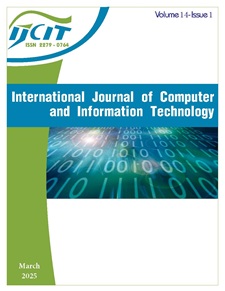The Evolution of Software Engineering: From Prehistoric Beginnings to the Age of Artificial Intelligence
DOI:
https://doi.org/10.24203/8rbykd84Keywords:
Artificial intelligence, Software engineering, Machine learningAbstract
This article presents a thorough overview of the historical background of software engineering, tracing its roots from antiquity to the contemporary time dominated by artificial intelligence (AI). Beginning with the basic programming languages of the mid-1900s, the article stresses major milestones, including the birth of object-oriented programming, the expansion of software engineering practices, and the transformational impact of structured programming. Additionally, the paper examines the limitations, possible hazards, ethical considerations, and environmental consequences of AI-powered software engineering, including machine learning (ML), the Agile revolution and its revolutionary impact on software development practices. Through the analysis of this developmental trajectory, the essay offers vital insights into the progressive nature of software engineering and the pivotal role of artificial intelligence in shaping its future.
References
[1] Zhang, Y., Li, X., & Wang, H. (2022). Artificial Intelligence and Software Engineering: Synergies and Challenges. IEEE Transactions on Software Engineering.
[2] Fowler, M. (2021). Continuous Delivery: Reliable Software Releases through Build, Test, and Deployment Automation. Addison-Wesley.
[3] Anderson, R. (2023). Security Engineering: A Guide to Building Dependable Distributed Systems. Wiley.
[4] Martin, R. C. (2022). Clean Architecture: A Craftsman's Guide to Software Structure and Design. Prentice Hall.
[5] Gartner. (2023). Forecast Analysis: Enterprise Software Markets, Worldwide. Gartner Research.
[6] UNESCO. (2023). Technology and Innovation for Sustainable Development. United Nations Educational, Scientific and Cultural Organization.
[7] McKinsey & Company. (2023). The Future of Work After COVID-19. McKinsey Global Institute.
[8] Fuegi, J., & Francis, J., Lovelace & Babbage and the creation of he 1843 ‘notes’. Annals of the History of Computing, 2003, 25(4), 16 – 26.
[9] Dijkstra, E. W., “Go To Statement Considered Harmful”. Communications of the ACM, 1968, 11(3), 147 – 148, 1968.
[10] Booch, G., Object-Oriented Analysis and Design with Applications. Addison-Wesley, 1994.
[11] Beck, K., Grenning, J., Martin, R., C., "Manifesto for Agile Software Development." Agile Alliance, 2001.
[12] Fowler, M. and Highsmith, J., The Agile Manifesto. Software Development, 2001.
[13] Fitzgerald, B., & Stol, K. J. "Continuous Software Engineering: A Roadmap." Journal of Systems and Software, 2021, 176, 110929.
[14] Patel, N., "Edge Computing Frameworks for IoT." IoT World Journal, 2025, 7(1), 10-18.
[15] Brown, A., Quantum Computing in Practice: A Developer's Guide. Quantum Press, 2025.
[16] Williams, E., Quantum Programming: From Theory to Practice. Quantum Tech Publications, 2024.
[17] Garcia, L., "The Rise of No-Code Platforms." Journal of Software Innovation, 2025, 12(3), 45-60.
[18] IEEE., Ethical Guidelines for AI Development. IEEE Standards Association, 2024.
[19] Taylor, M., "Programming Language Trends in 2025." Code Quarterly, 9(2), 2025, 15-30.
[20] Green Software Foundation., Carbon Aware SDK Documentation. Retrieved from [https://greensoftware.foundation](https://greensoftware.foundation), 2025.
[21] Ardito, C., Bernhaupt R., Sauer S., (2021). "Human-Centered Software Engineering: A Systematic Literature
[22] Bommasani, R., Hudson, D. A., Adeli, E., Altman, R. "On the Opportunities and Risks of Foundation Models." arXiv preprint arXiv:2301.04246, 2023.
[23] Chen, M., Tworek, J., Jun, H., de Oliveira Pinto, J. Kaplan "Evaluating Large Language Models Trained on Code., 2021, " arXiv preprint arXiv:2107.03374.
[24] Zhang, J., Harman, M., & Ma, L., "Machine Learning Testing: Survey, Landscapes, and Horizons." IEEE Transactions on Software Engineering, 2022.
[25] Johnson, R., Hurst, A., Safayeni, F., "AI-Driven Software Development: Trends and Challenges." International Conference on Software Engineering (ICSE), 2025.
[26] Alla, S., & Adari, S. K., MLOps Engineering at Scale. O'Reilly Media, 2021.
[27] Crawford, K., Atlas of AI: Power, Politics, and the Planetary Costs of Artificial Intelligence, 2021, Yale University Press.
[28] Brynjolfsson, E., & McAfee, A. (2023). "The Second Machine Age: Work, Progress, and Prosperity in a Time of Brilliant Technologies." W.W. Norton & Company.
[29] Preskill, J., "Quantum Computing in the NISQ Era and Beyond." Quantum, 2018, 2, 79.
[30] Shi, W., & Dustdar, S., "The Promise of Edge Computing." Computer, 2020,53(7), 78-81.
[31] Ardito, C., Stefan Saue., "Human-Centered Software Engineering: A Systematic Literature Review." Journal of Systems and Software, 2021, 172, 110864
Downloads
Published
Issue
Section
License
Copyright (c) 2025 Jonah Vincent Joshua, Diosdado Asumu Ndong Andeme

This work is licensed under a Creative Commons Attribution-NonCommercial 4.0 International License.
The articles published in International Journal of Computer and Information Technology (IJCIT) is licensed under a Creative Commons Attribution-NonCommercial 4.0 International License.


